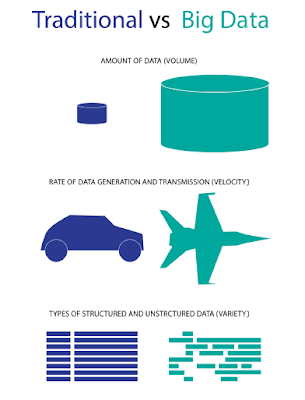BIG DATA ANALYTICS
Big Data analytics – the process of analyzing and mining Big Data – can produce operational and business knowledge at an unprecedented scale and specificity. The need to analyze and leverage trend data collected by businesses is one of the main drivers for Big Data analysis tools.
The technological advances in storage, processing, and analysis of Big Data include
(a) the rapidly decreasing cost of storage and CPU power in recent years;
(b) the flexibility and cost-effectiveness of datacenters and cloud computing for elastic computation and storage;
(c) the development of new frameworks such as Hadoop, which allow users to take advantage of these distributed computing systems storing large quantities of data through flexible parallel processing. These advances have created several differences between traditional analytics and Big Data analytics
1. Storage cost has dramatically decreased in the last few years. Therefore, while traditional data warehouse operations retained data for a specific time interval, Big Data applications retain data indefinitely to understand long historical trends.
2. Big Data tools such as the Hadoop ecosystem and NoSQL databases provide the technology to increase the processing speed of complex queries and analytics.
3. Extract, Transform, and Load (ETL) in traditional data warehouses is rigid because users have to define schemas ahead of time. As a result, after a data warehouse has been deployed, incorporating a new schema might be difficult. With Big Data tools, users do not have to use predefined formats. They can load structured and unstructured data in a variety of formats and can choose how best to use the data.


Comments